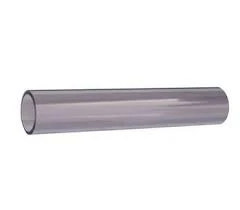دسمبر . 05, 2024 10:00 Back to list
Using PVC Pipe for Efficient Drip Irrigation Systems in Agriculture and Gardening
Using PVC Pipe for Drip Irrigation A Practical Guide
Drip irrigation is one of the most efficient watering methods for gardens, farms, and landscapes. It delivers water directly to the roots of plants, minimizing evaporation and runoff. While drip irrigation systems can be constructed using various materials, PVC (polyvinyl chloride) pipes offer a unique combination of durability, affordability, and versatility. In this article, we will explore the benefits of using PVC pipe for drip irrigation, how to set up a system, and some maintenance tips to ensure its longevity.
Benefits of PVC Pipe in Drip Irrigation
1. Durability and Longevity PVC pipes are resistant to corrosion, rust, and decay, making them an excellent choice for outdoor applications. They can withstand varying weather conditions, ensuring that your irrigation system remains functional for many years.
2. Cost-Effective Compared to other materials like copper or specialized irrigation tubing, PVC pipes are relatively inexpensive. This affordability allows gardeners and farmers to install efficient irrigation systems without breaking the bank.
3. Ease of Installation PVC pipes are lightweight and come in various diameters, making them easy to handle and install. They can be cut to length and connected using standard fittings, reducing installation time and costs.
4. Versatility PVC pipes can be used for various applications beyond just drip irrigation. They can be adapted for systems transporting drinking water, wastewater, and more. This versatility makes them a valuable resource for various projects.
5. Efficient Water Delivery When used in drip irrigation systems, PVC pipes can be customized to deliver water to specific plant locations. This targeted watering reduces water waste and improves crop yields by ensuring that moisture reaches the root zones effectively.
Setting Up a PVC Pipe Drip Irrigation System
pvc pipe to drip irrigation

1. Planning Your System Start by assessing the area you want to irrigate. Determine the types of plants, their water requirements, and the layout of the irrigation system. Measuring the area will help you estimate how much PVC pipe and accessories you will need.
2. Gathering Materials - PVC pipes (various diameters as needed) - PVC fittings (elbows, T-junctions, valves) - Drippers or emitters (specifically designed for drip irrigation) - A filter (to remove sediments and protect the emitters) - A pressure regulator (to control water flow)
3. Installation - Lay out the PVC pipes according to your plan, ensuring that they cover all plants needing irrigation. - Cut the pipes to the desired lengths and connect them using PVC cement and fittings. - Install the filter at the main water source to prevent debris from clogging the emitters. - Attach the pressure regulator to maintain consistent water pressure, which is crucial for efficient operation. - Drill holes in the PVC pipes where you want the drippers to be placed. Make sure to evenly space them based on the water needs of your plants.
4. Testing the System Before covering the pipes with soil or mulch, turn on the water supply to check for leaks and ensure that water is flowing properly through each emitter. Make any adjustments as necessary.
Maintenance Tips
Maintaining your PVC pipe drip irrigation system is essential to ensure its efficiency and lifespan
- Regular Checks Routinely inspect the system for leaks, clogs, and wear. Ensuring that all components are in good working order will help prevent water waste. - Cleaning the Filters Depending on the water quality in your area, the filter may need to be cleaned or replaced regularly. - Winterize the System In areas with freezing temperatures, it’s essential to drain the system and store the pipes away to prevent damage. - Monitor Plant Health Keep an eye on your plants for signs of over or under-watering. This feedback will help you adjust the system as needed.
In conclusion, using PVC pipes for drip irrigation systems offers numerous advantages, including durability, cost-effectiveness, and customization. By planning carefully, installing the system correctly, and maintaining it diligently, you can create an efficient irrigation solution that conserves water and promotes healthy plant growth. With the right approach, PVC pipe drip irrigation can be a game-changer for gardens and farms alike.
-
High-Precision PVC Rigid Sheets for Vacuum Forming | AI-Optimized
NewsAug.05,2025
-
Durable PVC-M Water Supply Pipes | 60-Year Life
NewsAug.04,2025
-
Premium HDPE Water Supply Pipes: Durable & Leak-Proof
NewsAug.03,2025
-
Premium PVC-M Water Supply Pipe - Durable & Efficient
NewsAug.02,2025
-
HDPE Drainage & Irrigation Pipe - Durable, Efficient Solutions
NewsAug.01,2025
-
Premium PVC Transparent Pipe: Durable & Clear Solutions
NewsJul.31,2025

